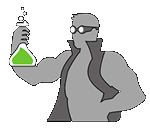The Chinese Plank, when done with just bodyweight, is a fantastic exercise for targeting the posterior side of the body.
It's also not super challenging if you're strong. So we're going to add some weight to it...which will actually help to bring in more anti-flexion in the core while you're doing the exercise because of HOW you'll be adding that weight.
To use this method, you'll need a power rack, a dip belt and some weight plates (I like bumper plates, but regular plates are fine).
How to set up the Weighted Chinese Plank
You may have seen people adding weight by having a spottter set weight plates on top of their midsection once in position.
If you don't have a spotter, you can easily use THIS method.
Start by setting the rails in your rack about 3 feet off the ground or so (you may need to adjust height a little bit, but this is a good starting place).
Rest your plates against the rack. Start with just one until you know you've got the height of the rails right and you're comfortable with the setup.

Put the dip belt on BACKWARDS so that the loop or chain is behind you.
String the chain through the plate(s).
I'm using a dip belt from Dark Iron Fitness - it's the best one I've ever used. It uses a thick nylon strap instead of a chain.
When you use a fair number of plates, you can actually just sit on them while you're getting the belt set up. I've got 160 lbs loaded here. Using bumpers makes it easier to load as they're all the same size.

Now, shift over to the rails. Set your hands on the one rail, like you were about to do a bench dip (don't do that terrible exercise, though...it's a great way to mess up your shoulders).

Get your mid to upper back on the rail, then get one foot up on the other rail.

Get the other foot up. I like to have the ankles resting on the other rail.
Now straighten your body out and hold the position for as long as you can.

The load will be pulling down on your midsection, so you'll have to contract your abs hard to prevent this while your posterior muscles (like glutes, hamstrings and lower back) will be engaged to prevent hip flexion, i.e. bending in half.
Don't go to complete failure on this. Once you start to lose position a bit, end the set.
Let your hips flex a bit, which lowers the plates to the floor (another reason to gauge rail height).

Then bring your feet down and you're done. This where you can just sit on the plates and rest until your next set, or you can unhook yourself.

This weighted version of the Chinese Plank is a great isometric workout.
Holding this straight position forces the core to engage, front AND back at the same time.
You can work up to some very decent weights with this setup. I had 160 lbs on the belt here, but I could likely go a fair bit higher, especially if I train this one regularly.
---
Want 90 more unique and challenging exercises to SHRED your core? Check out The Best Core Exercises You've Never Heard Of!
Share This Page...
Want Another Deep Core Exercise Like This?
It sounds horrible but it's actually VERY effective, combining a push and a pull at the same time as the torque goes directly through the core.



